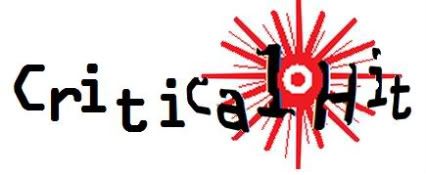- Format: PSP (version reviewed), DS
- Unleashed: Out Now
- Publisher: Rockstar Games
- Developer: Rockstar Leeds/Rockstar North
- Players: 1 (2 wireless local multiplayer)
- Site: http://www.rockstargames.com/chinatownwars
Faced with the subtitle ‘Chinatown Wars’, you’d be forgiven for expecting a whole new setting and atmosphere. It’s yet again the taxpayers of Liberty City you’ll be killing, terrorising, and setting on fire however; and only the tiniest proportion of the story is actually spent in Chinatown. Same old same old?
Well, no, not really. If GTA IV climbed into the teleporter from The Fly (original black & white version or David Cronenberg remake, your choice) and the original GTA sneaked in before the door shut, Chinatown Wars is what would come out the other side. So you have here the old – school top down view, but acknowledgement of the fact that it’s the space year 2009. So your character can swim, there’s a steering assist that stops you readjusting your driving line every two seconds (which you can turn off if you’re nuts), and the game autosaves every time you complete a mission (again, you can switch this option off – if you’re nuts).
The PSP version we’ve played for this review is a DS port (now there’s a first!). The two versions are essentially the same, though the PSP version has some more music tracks (though only one with vocals, which plays over the end credits) and extra missions – and the DS version, of course, incorporates touchscreen controls. Surprisingly perhaps, the touchscreen sections have been kept for the PSP version.
These aren’t minigames, but so called ‘microgames’ that last just 5 – 10 seconds each, and they’ve been slotted into the GTA experience surprisingly well. For example, stealing most parked cars now means hotwiring them via such a microgame. On the PSP, one method involves rotating the analogue slider to remove screws securing the panel hiding the wiring, holding L and R to bring the wires together, then rotating the slider once more to key the ignition. Take too long, and you set the car’s alarm off. Microgames are also used to smash padlocks, search dumpsters for weapons, and open up stolen vans to get at the goodies within – amongst other things.
The DS origins can also be seen in terms of presentation. For starters, there’s very little pedestrian speech. Also, rather than the fully rendered cut scenes we’ve all become accustomed to, the story here is told through a combination of static screens, in the style of box art for games such as San Andreas (and of course Chinatown Wars itself), and on – screen text. A few jokes suffer from being read rather than heard; but the script – which follows the usual GTA themes of death and betrayal – is sharp and witty (if not quite up to the standard of GTA IV). Even if you’re not a fan of the writing, there are plenty of rude words to giggle at.
Something that certainly doesn’t hint at the DS origins is the graphics. Everything’s been given a fancy coat of PSP paint, and been polished and tarted up until it looks just as good as anything else on the format. There can be some pretty major pop – up on occasion when driving; but it’s relatively rare, and never gamebreaking.
One criticism of GTA IV that regularly came up in the inevitable backlash was the slightly bizarre one that it was ‘too realistic’. GTA fans that made such comments should find that there are no such problems here. Not only the viewpoint has been taken from the first game, but also the refusal to take itself seriously. Rampages make a much welcome return, for example. Generally speaking, it’s also a little more fast paced than GTA IV. It’s not entirely unrealistic however; you can buy and sell drugs in Chinatown Wars, and selling drugs is a very effective way of making lots of money very quickly. We hear that this is quite realistic.
Bear in mind that this is a handheld title. Rockstar certainly have, which is largely evident in the length of the story missions. Apart from the final three, they tend to be pretty short and fairly simple – though often inventive. You’ll still find yourself going to point A to kill person B before escaping to point C, but sometimes you might find yourself using your GPS to trace the source of radio interference; or using a weapon to defend the vehicle you’re in rather than driving/flying it; or dumping illegal vehicles into the river before the authorities arrive.
The bottom line is however, the main story is over much quicker than you might expect. There are 58 story missions but despite this, we cleared them all (and 14 side missions along the way) in just under eight hours. Once you’ve done so however there’s an extra quest to find two mysterious golden lion statues (we’re still looking) hidden in random locations in Liberty City. And hey, this is GTA! Apart from the previously mentioned Rampages, vehicle specific missions remain (time limits on taxi journeys now seem perversely short) and the static objects to be hunted this time around are security cameras; 100 of them. There are also ‘random people’ to be met for side missions a la GTA IV.
And, yes, it’s possible to get your hands on a tank and blow the merry hell out of anything and everything you please.
Whichever format you buy the game on, it’s the best portable GTA game by a country mile. In fact, it’s one of the best in the series. This game has one foot in the past and one foot in the present – and is all the better for it. It recaptures the dumb grin glory the very first GTA enjoyed upon release, and makes us wonder what could be achieved if a similar project were attempted on a home console…

9/10























Comments